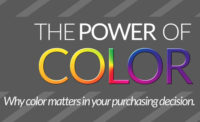How Can Private Label Brands Lead Innovation?
EDITOR’S NOTE: Most BRANDPACKAGING articles are tailored to our primary audience, the brand owner. But given the topic of our cover story this month (store brands), we thought we’d shift perspective and adapt this column to the needs of retailers, who, tellingly, make up a good part of our readership.
Private label brands are growing as retailers use them to differentiate their stores and build loyalty. In an effort to drive past a 20 percent unit share, retailers are moving their private label brands toward more distinctive, premium labels, and they are promoting their brands with in-store support and print.
At the same time, savvy consumers are no longer purchasing private labels just because of price; they perceive them to be of similar quality, sometimes better. They’re much more willing to accept a small price gap for improved quality than a larger price gap for lesser quality. And, as part of that, they’re also considering elements like packaging when making purchase decisions.
Leadership through structure
That’s why the next frontier for private label retailers is leadership-by offering packaging that differentiates through structure rather than simply imitating the leading brand.
Such leadership, however, requires a sophisticated understanding of the consumer. It is more difficult for retailers who are responsible for thousands of brands to identify and address a specific consumer need than it is for the more category-focused national brands. Store brands often rely on the manufacturing assets of national brands or stock suppliers to bring their offerings to the shelf. They are likely to source stock solutions rather than create or design their own. Stock solutions, though, are often already being leveraged by other manufacturers for the same category.
Instead, private label retailers have to become more creative to deliver innovation within a tighter cost of goods, with potentially more limited manufacturing options. In order for store brands to get to shelf with innovations faster, better and more cost-effectively, they are faced with the challenge to think differently, more unconventionally and from a new perspective.
Think outside the category
Recognizing these constraints, it’s time to think outside the category and gain inspiration from existing packages designed for other categories. For instance, offering tuna in a standard vacuum-sealed foil pouch offers a consumer advantage and differentiates the StarKist brand on the shelf. Tide ingeniously adapted marker pen technology for its Tide-To-Go Instant Stain Remover.
There is a vast array of existing packaging technology with the potential to yield a better consumer experience than what may already exist in the category. If you are budget- or time- constrained, yet you still need to innovate, think “search & reapply.” This is a proven technique for packaging innovation that eliminates the need to reinvent the proverbial wheel.
So, what categories are better bets for private label innovation? Creative innovation of this sort is more prevalent in categories that have a broad base of appeal. To facilitate more cost-effective production, retailers should start with brands with potential for the most volume to apply such out-of-category thinking.
Partner for innovation
It’s also time for retailers and manufacturers to become stronger partners in innovation. They are already benefiting from each other. National brand manufacturers profit from producing store brands. And retailers enjoy higher profit margins from their own brands than national brands.
Provided that a retailer’s brand can deliver enough scale, both parties can benefit by sharing innovation and market research resources to develop private label structures exclusive to a particular retailer. It can be a win-win situation: National brands would have the opportunity to benefit from a differentiated SKU without diluting their branded portfolio, and the retailer would win by offering competitive benefits and by increasing store and store brand loyalty.
If store brands are to leverage structural packaging innovation to drive sales, name brands must avoid stock packaging solutions. The goal for each should be to seek opportunities to differentiate from one another, speak to their unique positioning and brand character, and improve the consumer experience.
Structural packaging is the new frontier-for private label and name brands alike. And, if leveraged correctly, it can help brands to rise above the “sea of sameness” prevalent in retail today. BP
Gail Ritacco is vice president of market insights at Product Ventures, a creative agency for structural packaging innovation. The former leader of market research at Dannon, Gail has more than 20 years of consumer insights experience. Contact Gail at gritacco@productventures.com.
Looking for a reprint of this article?
From high-res PDFs to custom plaques, order your copy today!







